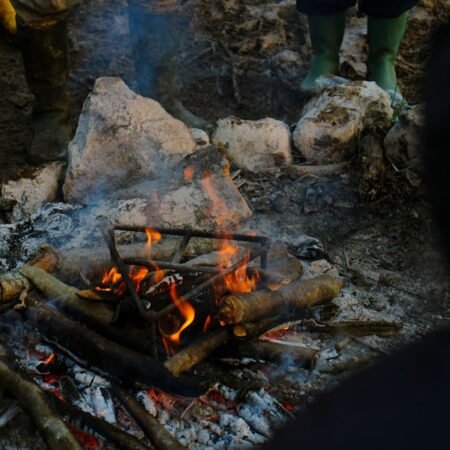When planning a hiking trip with children, selecting the right trail is vital for a successful and enjoyable experience. It is essential to consider the age, abilities, interests, and attention spans of your children when choosing a trail. Opt for trails that are relatively flat, well-maintained, and have minimal obstacles and hazards.
Generally, shorter trails are more suitable for younger children, while older kids can handle longer and more challenging hikes. Trails with interesting features such as waterfalls, wildlife, or scenic viewpoints can help keep children engaged and motivated. Researching the trail beforehand and reading reviews from other families can provide valuable insights to inform your decision.
Another crucial factor to consider when selecting a trail is the availability of facilities at the trailhead and along the route. Look for trails with amenities such as restrooms, picnic areas, and easy access to drinking water. Some trails may also offer interpretive signs or educational programs that can enhance the experience for children.
Additionally, consider the weather and time of year when choosing a trail, as certain trails may be more suitable for different seasons. By taking these factors into account, you can ensure that you choose a trail that is safe, enjoyable, and well-suited to your family’s needs.
Key Takeaways
- Choose a trail that is suitable for your family’s hiking experience and physical abilities
- Essential gear and supplies for hiking with kids include proper footwear, clothing, snacks, and water
- Safety precautions and emergency preparedness are crucial when hiking with kids, including first aid kits and knowledge of local wildlife and plants
- Engage kids in nature with fun activities and games such as scavenger hunts and nature bingo
- Be prepared to manage challenges and setbacks on the trail, such as fatigue and unexpected weather changes
Essential Gear and Supplies for Hiking with Kids
Packing the Right Gear for Each Child
One of the most critical items to bring is a well-fitted backpack for each child, containing snacks, water, sunscreen, bug spray, a first aid kit, and any necessary medications.
Dressing Kids for the Hike
It’s also important to dress kids in appropriate clothing and footwear for the hike, taking into account the weather and terrain. Comfortable and sturdy shoes are a must, as well as lightweight and moisture-wicking clothing to keep kids cool and dry.
Essential Items for the Entire Family
In addition to personal gear, it’s important to bring along some essential items for the entire family. A map of the trail and a compass or GPS device can help prevent getting lost, while a whistle and a flashlight can be useful in case of emergencies. Other useful items to pack include a lightweight blanket or tarp, a multi-tool or knife, and extra layers of clothing in case the weather changes unexpectedly. By being well-prepared with the right gear and supplies, you can ensure that your family is ready for a safe and enjoyable hiking experience.
Safety Precautions and Emergency Preparedness
Safety should always be a top priority when hiking with kids, and taking the necessary precautions can help prevent accidents and emergencies on the trail. Before setting out on a hike, it’s important to educate kids about basic safety rules such as staying on the trail, not wandering off alone, and being aware of their surroundings. It’s also important to establish a plan in case anyone gets separated from the group, including a designated meeting point and a system for signaling for help if needed.
In addition to educating kids about safety, it’s important for adults to be prepared for emergencies by carrying a fully stocked first aid kit and knowing basic first aid skills. It’s also a good idea to have a plan for communication in case of emergencies, such as carrying a fully charged cell phone or a two-way radio. In remote areas without cell service, consider bringing along a personal locator beacon or satellite messenger device for added peace of mind.
By being proactive about safety and emergency preparedness, you can ensure that your family is well-equipped to handle any unexpected situations on the trail.
Engaging Kids in Nature: Fun Activities and Games
| Metrics | Data |
|---|---|
| Number of Hiking Trails | 50 |
| Recommended Age for Kids | 5 and above |
| Essential Gear | Hiking boots, backpack, water bottles, snacks, sunscreen |
| Tips for Parents | Start with short trails, involve kids in planning, pack extra clothes |
| Benefits for Kids | Physical activity, connection with nature, confidence building |
One of the best ways to make hiking with kids enjoyable is to engage them in nature through fun activities and games. Encourage kids to use their senses by listening for bird calls, identifying different types of plants, or searching for animal tracks. Bring along a field guide to help kids identify wildlife and plants they encounter along the trail.
Another fun activity is to bring along a nature journal or sketchbook for kids to record their observations and drawings. In addition to nature-based activities, there are plenty of games that can keep kids entertained and motivated on the trail. Classic games like “I Spy” or “20 Questions” can be adapted to the natural environment, while scavenger hunts or treasure hunts can add an element of excitement to the hike.
For older kids, consider bringing along a nature-themed trivia game or creating a nature-themed bingo card with items to spot along the trail. By incorporating fun activities and games into your hiking adventure, you can help kids develop a deeper appreciation for nature while keeping them engaged and entertained.
Managing Challenges and Setbacks on the Trail
Despite careful planning and preparation, challenges and setbacks can still arise when hiking with kids. It’s important to be flexible and patient when dealing with unexpected obstacles such as tiredness, boredom, or minor injuries. Encourage kids to take breaks when needed, and be prepared to adjust your pace or even turn back if necessary.
It’s also important to be mindful of the weather and other environmental factors that can affect your hike, such as heat, cold, rain, or high winds. In addition to physical challenges, it’s important to be mindful of emotional challenges that kids may face on the trail. Encourage open communication with kids about their feelings and concerns, and provide plenty of positive reinforcement and encouragement.
Be prepared to offer distractions or incentives to keep kids motivated, such as promising a special treat at the end of the hike or playing their favorite music on a portable speaker. By being proactive about managing challenges and setbacks on the trail, you can help ensure that your family has a positive and rewarding hiking experience.
Nurturing a Love for the Outdoors in Children
Fostering Curiosity and Appreciation
Encourage kids to ask questions about what they see and experience on the trail, and take the time to provide thoughtful answers that foster their understanding and appreciation of nature.
Empowering Kids through Involvement
Another way to nurture a love for the outdoors in children is to involve them in planning and decision-making when it comes to hiking adventures. Let kids have a say in choosing the trail, packing their gear, and deciding on activities or games to play along the way. By giving kids a sense of ownership and responsibility for their outdoor experiences, you can help them develop confidence and independence in nature.
Environmental Education and Stewardship
Finally, consider incorporating environmental education into your hiking adventures by teaching kids about conservation, wildlife protection, and Leave No Trace principles. By nurturing a love for the outdoors in children, you can help ensure that they grow up with a deep connection to nature and a desire to protect it for future generations.
Creating Lasting Memories: Tips for a Successful Hiking Adventure with Kids
A successful hiking adventure with kids is not just about reaching the destination – it’s about creating lasting memories that will be cherished for years to come. One of the best ways to make your hiking adventure memorable is to take plenty of photos along the way. Encourage kids to capture their favorite moments and sights on the trail, whether it’s a beautiful view, an interesting plant or animal, or a funny moment with their siblings or friends.
Another tip for creating lasting memories is to encourage kids to keep a nature journal or scrapbook of their hiking adventures. Provide them with materials such as colored pencils, stickers, or printed photos to create a visual record of their experiences in nature. Encourage them to write about their favorite parts of the hike, draw pictures of what they saw, or press leaves or flowers as mementos of their outdoor adventures.
Finally, consider creating traditions or rituals that can make your hiking adventures with kids even more special. Whether it’s singing a favorite song at the start of each hike, having a picnic at a scenic spot along the trail, or ending each hike with a special treat or reward, these traditions can help create a sense of continuity and anticipation for future adventures. By following these tips for creating lasting memories, you can ensure that your family’s hiking adventures will be cherished for years to come.
In conclusion, hiking with kids can be an incredibly rewarding experience that fosters a love for nature, promotes physical activity, and creates lasting memories for families. By choosing the right trail, packing essential gear and supplies, prioritizing safety and emergency preparedness, engaging kids in nature through fun activities and games, managing challenges and setbacks on the trail, nurturing a love for the outdoors in children, and creating lasting memories through thoughtful traditions and rituals, families can enjoy successful hiking adventures that will be cherished for years to come. With careful planning and preparation, families can embark on memorable hiking adventures that will inspire children to develop a lifelong connection to nature and outdoor exploration.
FAQs
What age is appropriate to start hiking with kids?
It is generally recommended to start hiking with kids when they are able to walk on their own, which is typically around the age of 3 or 4. However, the specific age may vary depending on the child’s physical abilities and the difficulty of the hiking trail.
How do you choose a suitable hiking trail for kids?
When choosing a hiking trail for kids, it is important to consider the length, difficulty, and terrain of the trail. Look for trails that are relatively short, have minimal elevation gain, and are well-maintained. Additionally, consider the presence of amenities such as restrooms and picnic areas.
What essential items should be packed for a hiking trip with kids?
Essential items to pack for a hiking trip with kids include plenty of water, snacks, sunscreen, insect repellent, a first aid kit, a map or GPS device, extra clothing layers, and any necessary medications. It is also important to pack age-appropriate gear such as a carrier for younger children or trekking poles for older kids.
How can parents keep kids engaged and motivated during a hike?
To keep kids engaged and motivated during a hike, parents can involve them in the planning process, play games along the trail, point out interesting plants and wildlife, and set achievable goals such as reaching a certain landmark. It can also be helpful to take frequent breaks and encourage kids to explore their surroundings.
What safety precautions should be taken when hiking with kids?
Safety precautions when hiking with kids include staying on marked trails, keeping a close eye on children at all times, teaching kids about potential hazards such as poison ivy or steep drop-offs, and being prepared for changes in weather. It is also important to educate kids about trail etiquette and the importance of respecting nature.













